Lotus has unveiled a new EV concept which it calls “Theory 1,” a lightweight(-ish) electric sportscar concept inspired by the Lotus Esprit with nearly 1,000hp and capable of speeds up to 200mph.
Here at Electrek, we see and report on a lot of wild EV concepts. These concepts are often accompanied by long treatises on how the design incorporates various “core principles,” unnecessary branding of things that will never make it to production, and buzzwords aplenty.
In a way, the Theory 1 is no different. My eyes glazed over at the 2,000+ words in Lotus’ press release before reaching the table of technical specs.
And yet, there is still something here, because this is Lotus – a company with an incredibly significant motorsport heritage… and a significant electric car heritage too.
Lotus is the company that provided the lightweight “gliders” on which the original Tesla Roadster, the car that started the modern electric vehicle era, was built.
And lately, Lotus has gotten into electric cars on its own, with the $2million Evija hypercar and the consumer-focused Eletre SUV and Emeya Hyper-GT.
But you’ll notice – one of those things is not like the others. Despite being a company famous for its focus on small cars, owing to founder Colin Chapman’s theory to “simplify, then add lightness,” the Eletre and Emeya are both over 5,500lbs, more than twice the weight of the original Tesla Roadster.
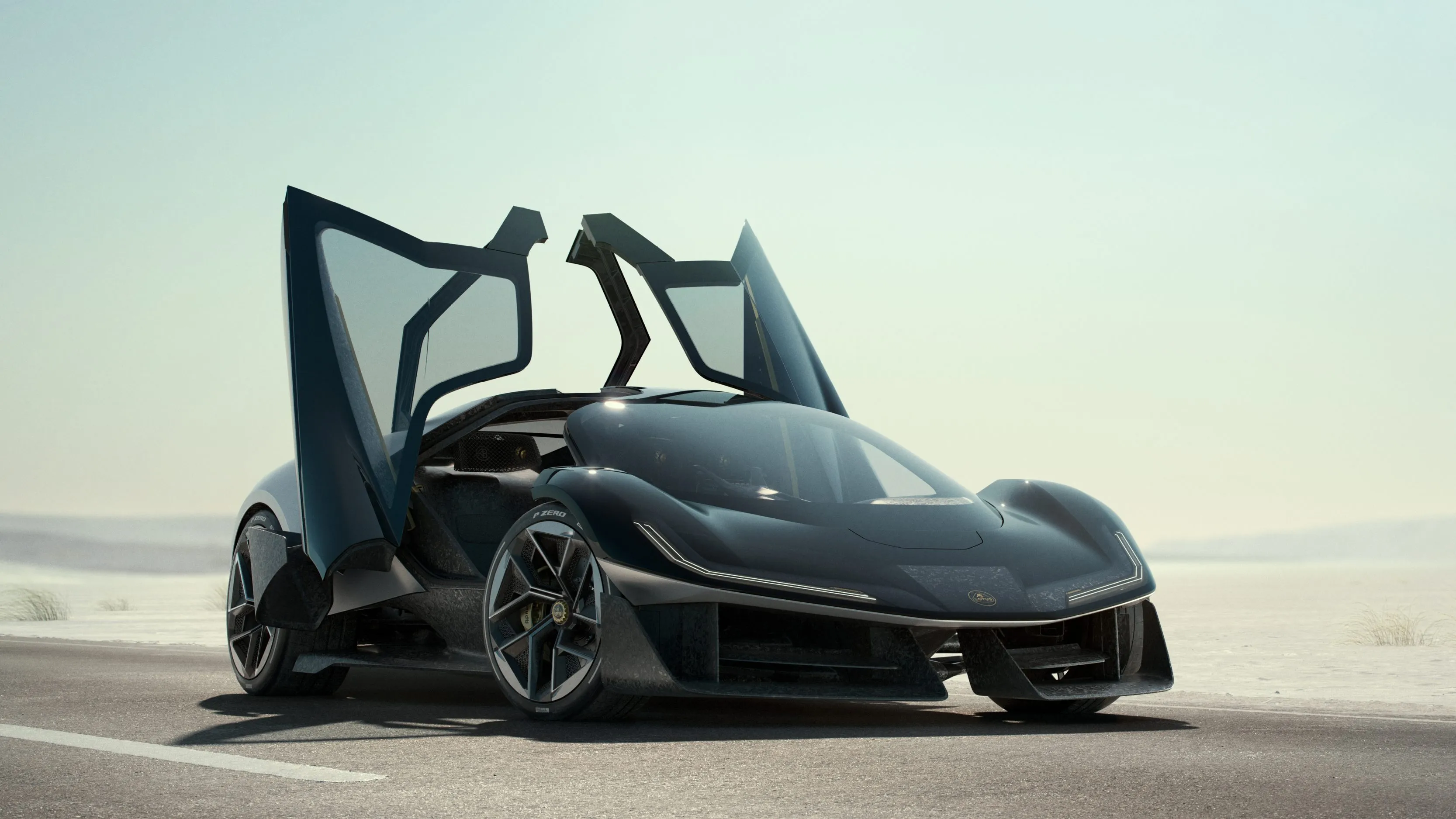
And so, Lotus’ new Theory 1 – packed full of probably-unrealistic concept features, but also clearly going downmarket from the Evija’s eyewatering $2million pricetag – could signal somewhat of a return to form for the wayward small-car maker.
That’s because its curb weight is listed at a much more reasonable 1600kg, or 3,527lbs. This is still hefty compared to the absolute lightest vehicles on the road right now, but it’s on the lower end of most powerful sportscars available today (including lighter than the Evija), quite low compared to other EVs, and significantly less than some ridiculous gas-powered chonkers.
It’s also a lot more than the original Lotus Esprit which the Theory 1 takes inspiration from, which began at around 2,000lbs. But later versions of the same vehicle weighed as much as around 3,000lbs, not too far off from the Theory 1.
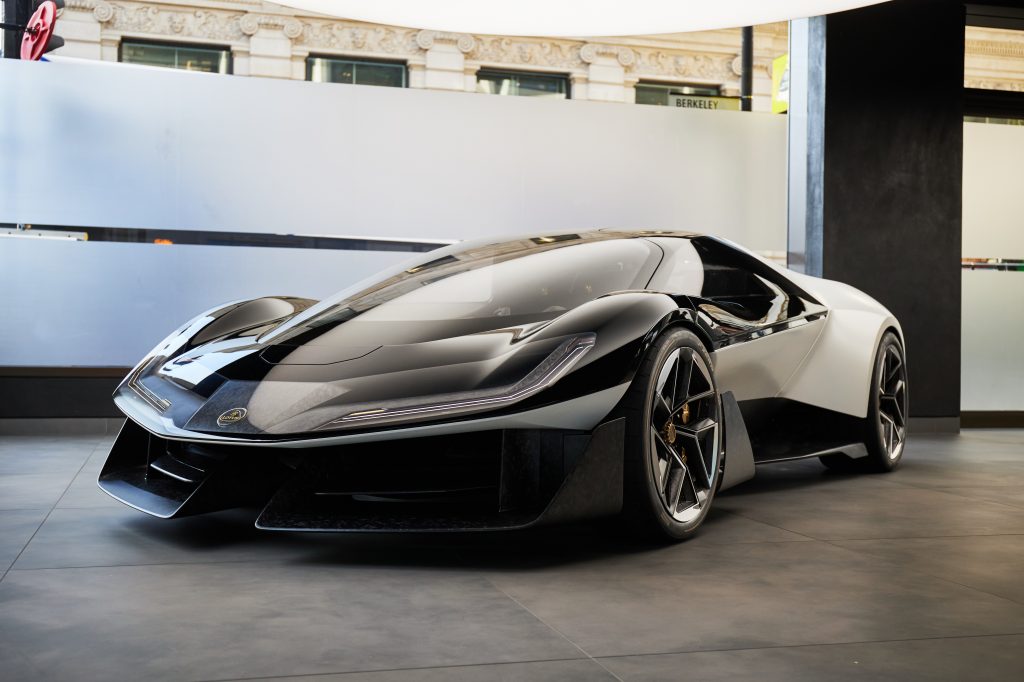

In that relatively small package, Lotus claims it has fit some great performance specs.
Its 986hp powertrain is capable of sprinting 0-100km/h (62mph) in less than 2.5 seconds, with a top speed of 320km/h (198mph).
Energy comes from a 70kWh battery with a 250 mile range. This is a little smaller than some of the larger batteries we’ve seen around (the Eletre has a 112kWh battery, for example), but that’s the benefit of having a light, low-slung vehicle.
But specs don’t tell everything about how a vehicle feels to drive. And Lotus is promising to bring exceptional driving dynamics to this vehicle, through methods like including the motor and battery as stressed members and mounting the rear wing directly to the suspension assembly.
It also wants to use steer-by-wire, a technology which has been thought about for a long time but only recently has made its way into production vehicles, like the Lexus RZ and Cybertruck.
But perhaps the most striking part of the driver experience on the Theory 1 is its 3-seat design, seating the driver in the center of the vehicle, similar to the famed McLaren F1.
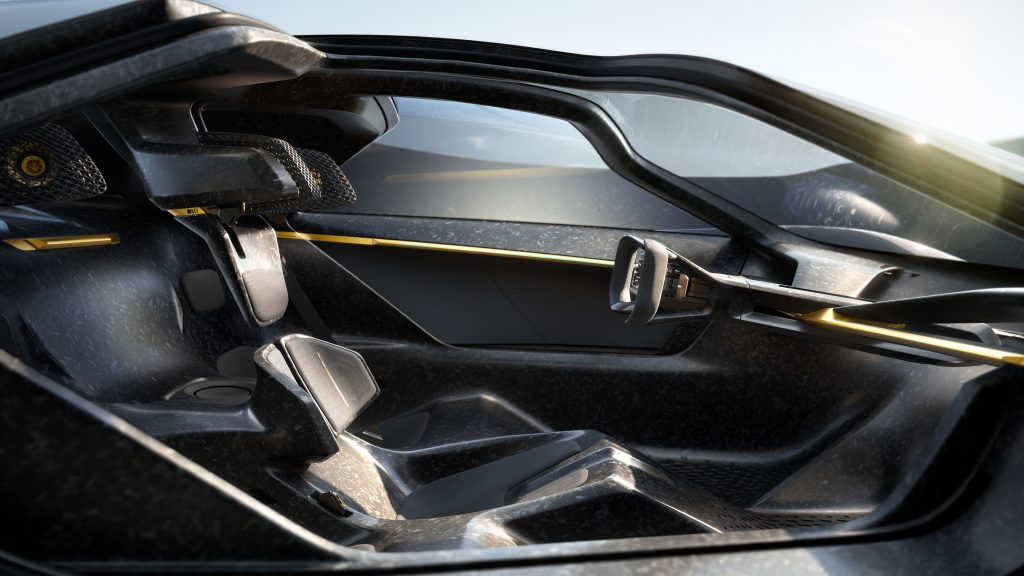
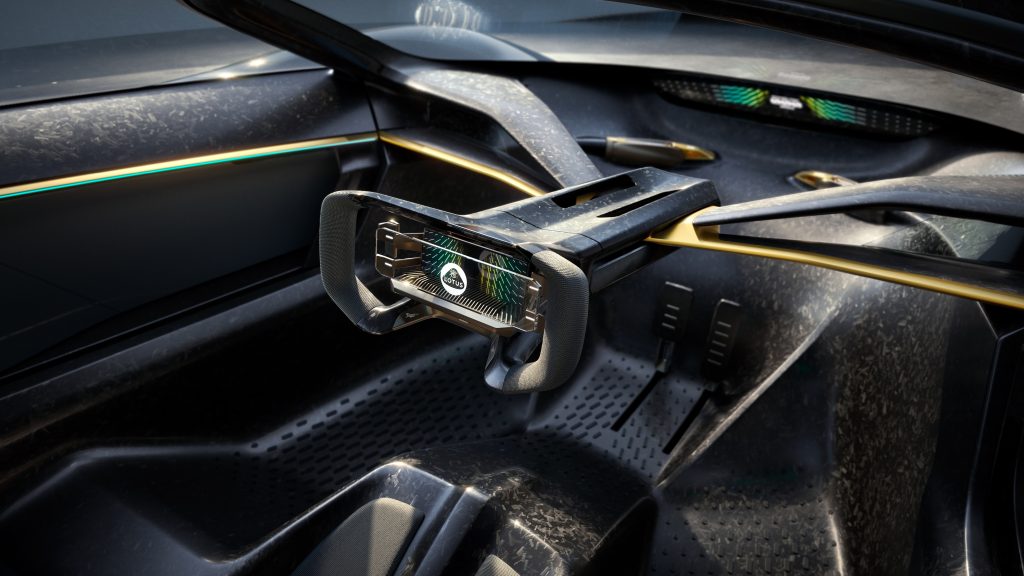
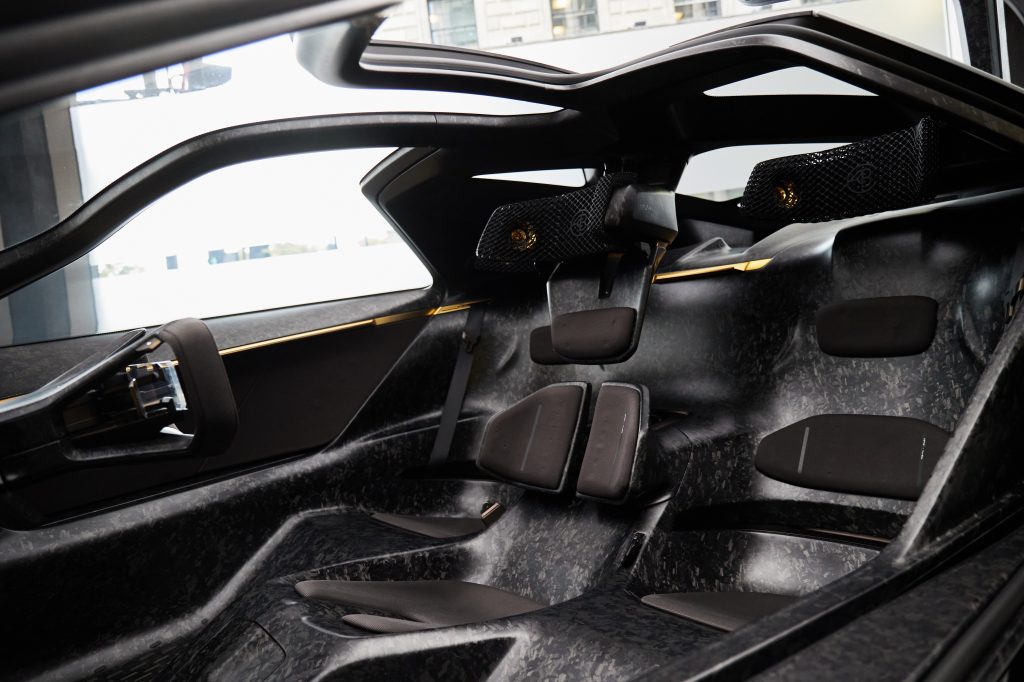
The car’s light weight comes from extensive use of advanced materials like carbon fiber and titanium, which are sure to boost the price of this vehicle if they make it to production. In that previously-mentioned 2,000 words, there’s plenty of talk about 3D printing and recycled materials as well.
But Lotus says that it wants to reduce the amount of “A-surface materials” – those you can touch – down to 10 or fewer, compared to the 100-or-so in most cars.
“There’s been this period of maximalism, and people having to do one-upmanship and go above, above, above. And I think we’ve reached that point where it plateaus in stylistic terms, and also in the demonstration of tech. We’re not in a crazy numbers race with this car.”
-Lotus design VP Ben Payne, as quoted by Wired
So the original Lotus philosophy of “simplify, then add lightness” is certainly present in this concept, signaling a return to form for the brand after a few years of wandering in the desert.
Finally, while we are just talking about a concept here, we’ve certainly seen plenty of EV concepts make their way into production in some way or another. Even particularly wild ones like the BMW Vision EfficientDynamics concept ended up being made into the BMW i8 sportscar.
So we might even see this Theory 1 show up on the road at some point. But, even if we don’t, at least it shows that Lotus is back to thinking about smaller cars (as they should have been all along…), and we’ll hopefully get a real EV sportscar out of them in a few years.
Charge your electric vehicle at home using rooftop solar panels. Find a reliable and competitively priced solar installer near you on EnergySage, for free. They have pre-vetted installers competing for your business, ensuring high-quality solutions and 20-30% savings. It’s free, with no sales calls until you choose an installer. Compare personalized solar quotes online and receive guidance from unbiased Energy Advisers. Get started here. – ad*
